Just to get this out of the way: I’m not getting paid by WD or anyone for this blog post. I’m still a penniless student slacking around occasionally doing something that can be considered somewhat productive like twice a week.
Anyway, let’s get to the point. Even though HDDs are dying and SSDs are rising fast, today I decided to write a blog post describing the basic differences of the consumer / small business “color” HDDs from Western Digital, as far as I can understand it, because one of my friends asked me about Black and Green recently and he mistook their characteristics. As you should’ve known, Western Digital’s consumer series currently has 5 “colors”: Blue, Green, Red, Purple, and Black. (There’s also Red Pro but I’ll discuss it together with Red). Blue is marketed as being the default drive, Green the eco-friendly drive that I’m still not sure why so many people care about, Red the NAS/RAID drive, Purple the surveillance drive, and Black the performance drive for badasses who probably use Corsair RAM and value qualities that can’t be easily seen over money. Anyway, these advertisements range from barely-passing to better-than-marketed, and I’ll explain why.
UPDATE: There’s now also another drive in the enterprise (hence not “consumer-grade”) department that’s “colored” by the name of WD Gold. For the sake of completeness I’ll cover this one as well even though again, it’s not really in the same market segment as the other five.
So here we go, onto the basic drive that you should actually care about, and not just because of its cheap price: WD Blue.
WD Blue – Default storage for non-special users
And don’t pretend to be special while choosing WD drives, seriously. If you don’t REALLY need any of the quirky features of the other color drives, then just go with the Blue like everyone else. Why?
Because it’s nearly as fast as the Black.
Don’t believe me? Here’s a screenshot from Userbenchmark:
Wow, of course the Black is faster… by a staggering TWO PERCENT! Of course, the Black has other benefits that I’ll discuss later, but speed-wise, which is the thing most people care about, it’s quite shocking that the “default” drive performs just about as well as the top drive. Now, I know that Userbenchmark may not be an “official” benchmark results source, but it fares pretty well in comparing one part to another, and even if you don’t believe Userbenchmark, just search for reviews of the WD Blue. Out of all the reviews and benchmarks I’ve seen, the Blue is always very close to the Black “performance”-wise.
Thus. the Blue drive is the cheapest drive of the 5, and yet it’s the second fastest. If you’re just a normal user, I reckon you won’t see any reason not to go for that. But why is the Blue so cheap, then? Well, the reason is actually pretty simple: there’s no special tech inside it.
While the Green has technologies that ensure it always uses the least power, the Red has technologies that ensure it works well when interconnected with other drives of the same kind, etc. The Blue is just… a drive. That works well. They don’t need to care what demographics it’s aimed at, they don’t need to care what technologies it should have, they just need to make a drive that works at competitive speed and has decent capacity. That’s why it’s cheap.
However, that aside, there’s a drawback of, not a single drive itself, but the whole series: the Blue series has the smallest capacity out of the 5. The maximum-capacity Blue drive is merely 1 TB large, which is measly compared to the 4 TB of the Black or the 6 TB of the Green, Red and Purple (UPDATE: WD added capacities of up to 6 TB for the latest series of the Blue drives (the WDxxEZRZ series), so this no longer holds true. Meanwhile, the most spacious Green, Red and Purple drives are now 8 TB large, and the most spacious Black drive can now hold 6 TB. However, the largest 7200 RPM Blue drive is still only 1 TB large.)
So, to summarize, my opinions on the Blue are:
Pros:
- It’s the cheapest series from WD.
- Doesn’t really lose to anything in terms of speed (in the consumers HDD segment, of course).
Cons:
- Doesn’t have anything special, if you do need it.
The drive with the highest capacity is only 1 TB large.
WD Green – Large cheap eco drive for people who wants to save money
…and gives absolutely zero *censored* to anything but capacity.
Now, the Green costs about the same as the Blue for the same capacity, but in some areas, like mine, it costs just a little bit more, so I’m gonna count it as the second cheapest drive in the group. But first, let’s look at its “performance” compared to the Blue:
Wow, that sucks. Ok, so what does the Green have going for it?
Well, first, it fixed the Blue’s main problem: the Green series has drives with up to 8 TB of capacity.
Besides, the Green is focused on “cool, quiet, eco-conscious” operation. But what does this all mean?
…Basically, it means that the Green will try its hardest to use as little power as possible.
Naturally, “power-saving” is part of “eco-conscious”, and using less power will cause the drive to spin less aggressively, leading to less heat and noise.
But wait a sec, isn’t that a good thing? I mean, the environment is in a grave situation right now. Just think of the cute pandas and the poor children in India! Plus, the electricity bill is getting more and more expensive by the day…
…Well, thing is, your hard drive most likely doesn’t use that much power in the first place, so saving a few percents of that power won’t help things. If you really want to save power then you’d actually be better off opting for a more efficient graphics card or turning off your AC while gaming… that’d help a lot better.
Plus, do you know what does less power actually means for computer components? It means less performance.
But we have already covered that. So what else?
…Absurd failure rates.
Well, while I don’t have the exact numbers, and I’m sorry for that, there are apparently many complaints about the WD Green failing early on online markets such as Newegg or Amazon. Or, even if it’s not failing, it’s more prone to cause drive errors and BSoDs than the other drives. Plus, it’s on QNAP’s “Not recommended” list of hard drives (or at least, the old version (EAxx) is). So, using a Green drive is like using a Seagate drive (yes, Seagate is more prone to failure than WD), except even worse: you always stand at the risk of being kicked out of your work, or seeing your drive suddenly looking as dead as your face when you realize you don’t have a backup.
Oh, and another thing, the Green has “IntelliPower” RPM, which basically means it’ll have a random spin rate between 5400 RPM and 7200 RPM… mostly at the lower portions. You know, to save power.
Thus, to sum up, my opinions about the Green are:
Pros:
- Uses less power
- Has options with up to 6 TB of capacity
Cons:
- Lowest performance of the group
- More erroneous than average
WD Black – The Color of Elites
The Black is the most expensive drive of the five consumer-grade drives (if you don’t count Red Pro), and it’s also marketed as having the best performance of all. But as we’ve covered, the Black’s “performance” is actually not much better than the Blue, the cheapest drive. So, what’s the Black’s excuse for being around 50% more expensive than the Blue?!
Well, for starters, the Black has as much as FIVE years of warranty, which is the longest of the bunch, much better than the two years of the Blue and Green, or the three years of the Red and Purple.
But more importantly, the thing that makes the Black special is actually not speed (though it DOES have the fastest speed out of the five, strictly speaking), but stability. First, let’s look at the Black’s advertised technologies again:
- Vibration Control Technology: Adapt to mounting problems or vibration conditions inside the case.
- StableTrac: Automatically stabilizes the platters for more accurate tracking.
- High Resolution Controller: Increases data precision across the hard drive (not sure how this one works…)
- Corruption Protection Technology: Protects and limits the potential problem of data loss during power failure or power loss to the hard drive
- Dynamic Cache: Optimizes cache allocation between reads and writes, reducing congestion and improving overall drive performance.
- NoTouch Ramp Load Technology: The seeking head never touches the platters.
Do you see anything in common in those “technologies”? Well, you should’ve noticed that all of those technologies aim for “more precise” and safer tracking rather than “faster” tracking. This means that while the Black may not work that much better than the Blue in authentic benchmarks, it’ll lead to better real-life performance, where it’ll track real data scattered on our disk, and not just random blocks of data fed by the benchmarking program. Plus, it’ll be much more stable and safer than the other drives, and will also wear down slower than the Blue or Green, keeping its performance for a longer period of time. That explains the 5-year warranty.
To further strengthen the point, let me tell you my own story. I myself used to use a 2TB Black drive (old FAEX version though), and it once died after around 2 and a half years of use. Based on a reliable technician’s diagnosis, it first got a problem in the PCB due to… complicated electrical problems (thunderstorm or crappy electricity net or… something), but then really died when it got ransacked by a faulty data recovery center. Thus, remembering that the Black drive has 5 years of warranty instead of 2, I came to WD’s warranty center for a replacement. My dad, who was very dim when it comes to technology, then asked if we could just take the 2TB Red drive on display as replacement, since it’s “also 2TB”. Before I could retaliate, the employee refused, saying that my Black drive was “far superior”, and added that even with the 5-year warranty, it’s “extremely rare” to see someone comes there with a Black drive, thus there wasn’t a replacement ready and I’d to wait a few days.
So, with that out of the way, my opinions on the Black are:
Pros:
- Technically has the fastest speed out of all the consumer drives..
- May have much better real-life performance than the Blue in the long term.
- Much more stable and reliable.
- Has a 5-year warranty.
Cons:
- Much more expensive than most other drivevs
- Runs louder and a bit hotter than Blue or Green (minor annoyance, doesn’t mean it’s not as reliable as Blue or Green)
WD Red – They love each other
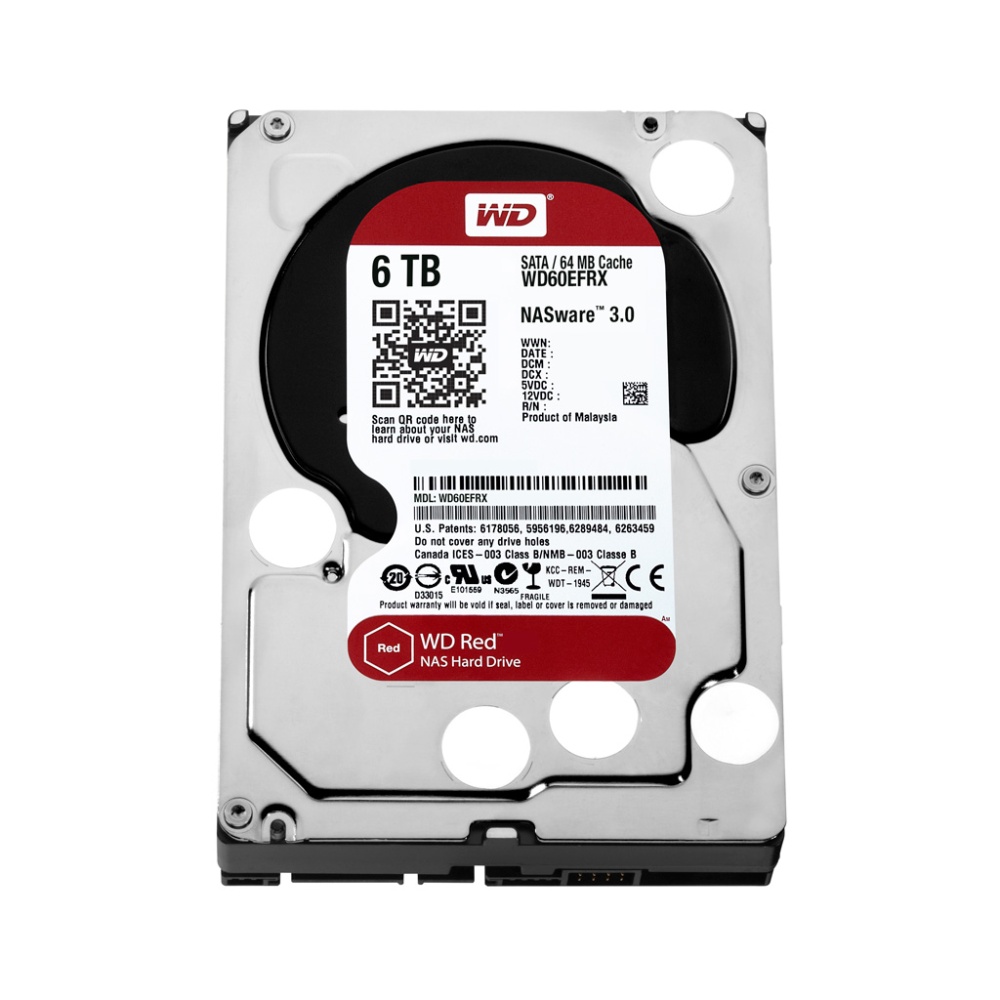 Now this is where things get a little bit… advanced. Unlike the former 3 drives which were desktop drives and were meant for your PC, the WD Red is a NAS drive, meaning it was optimized for NAS systems.
Now this is where things get a little bit… advanced. Unlike the former 3 drives which were desktop drives and were meant for your PC, the WD Red is a NAS drive, meaning it was optimized for NAS systems.
So what is a NAS system, you ask? Well, NAS stands for Network-Attached Storage, and a NAS system is basically a hard drives system for a network. Think of it as the storage part of a mini-server for your office building, for example. With that being said, what’s so special about NAS drives? Well, they need to work as one, with perfect harmony.
Thus, the Red drives are equipped with NASware 3.0, which allows support for NAS systems of up to 8 bays, as well as 3D Active Balance Plus, which basically syncs the drives in a same system together to reduces overall vibrations and heat. The Red also has support for TLER, which is basically a time limit for the drive to fix its own errors, so that it forcefully stops before the NAS system recognizes the drive as dead, drops the drive out of the system and marks the system as degraded. This is generally a good thing for multi-drive interconnected systems, but not good for individual drives (usually used in personal systems), since the drives may not be done fixing errors before they are forced to stop
However, I must say that the Red is mostly marketing fluff though. Though it’s not as erroneous as Green, it’s also not known to be reliable. For real NAS devices you would have to look at Western Digital’s Enterprise-class drives (the Se, Re, and Ae series), which won’t be discussed here, or AT LEAST the Red Pro.
Hence, while the “business, professional” vibe of the Red may give the impression that it’s better than the Black, I have to frankly say that it’s not. Let’s look at a performance comparison, this time between the Red and the Blue (which is the default):
Oh my God… Just what’s the Red’s problem?
Another reason for this is: like I said, reliability. I’ve heard that the Black can actually be used in a NAS environment just as well as the Red, if not better. After all, although the Black is a “dirty desktop drive”, it’s still tuned for maximum performance and stability, with all kinds of safety measures installed, whereas the Red is merely advertised as “designed for 24/7 environment”.
WD Red Pro
The Red Pro is even more expensive than the Black, for a few reasons. It’s basically the Red, with better tracking technologies aside from 3D Active Balance Plus, such as the Black’s StableTrac and its own special “dual actuator technology”, and support for NAS systems with 8-16 bays. It’s also tested more thoroughly and comes with a 5-year warranty like the Black instead of 3. However, its maximum capacity is only 4 TB, whereas the normal Red series has 6 TB models.
Overall, here are my thoughts regarding the Red series:
Pros:
- Has TLER and other optimizations for NAS
- Good vibrations control system to ensure the drives work well with one another
- Has a 3-year warranty (5 for Red Pro)
Cons:
- Mediocre reliability (at least for regular Red)
- Performance comparable to Green whereas the price is much higher
WD Purple – The Mysterious Beholder
To be honest, I just don’t understand much about the WD Purple, but apparently it’s a “surveillance” HDD to be used with camera systems to store surveillance data. Like the Red, it’s yet another drive advertised for “24/7 operation”, comes with 3-year warranty, and it also supports TLER.
However, its key feature is AllFrame, which… is supposed to optimize ATA streaming to give you better video streaming rate and less frame loss or something, I don’t quite understand (sorry, if anyone knows better in this department, please enlighten me on this. Thank you very much. >.<) Apparently, it also has the Black’s Dynamic Cache system inside AllFrame, though tuned differently (write-intensive instead of balanced), and it has lower power consumption, not by cheap means like the Green, but with its own technology called IntelliSeek, which is supposed to find the seeking path that uses the least amount of power (basically the shortest seek path I think).
Anyway, let’s take a look at the performance comparison:
*Burst out laughing*
Well, that certainly explains why the Purple seems to be the least popular of the 5… It’s the 2nd most expensive drive, only after the Black, and yet it doesn’t seem to deliver where it counts. It also seems to have some reliability problems, too.
Like the Red Pro, the Purple also has a special edition called Purple NV, which is just a Purple that supports up to 64 cameras instead of 32 and has a stronger physical chassis to protect against natural substances like dust from outdoors. The Purple NV is meant to use for NVRs (Network Video Recorders) while the Purple is meant for DVRs (Digital Video Recorders)
Sadly, because I couldn’t quite understand this drive (the only thing I know for sure is that it’s supposed to be very write-intensive for surveillance operations), I don’t feel like I can give a very fair “Pros and Cons” section for it. Thus, I think I’ll end this section here.
WD Gold – Ka-ching!
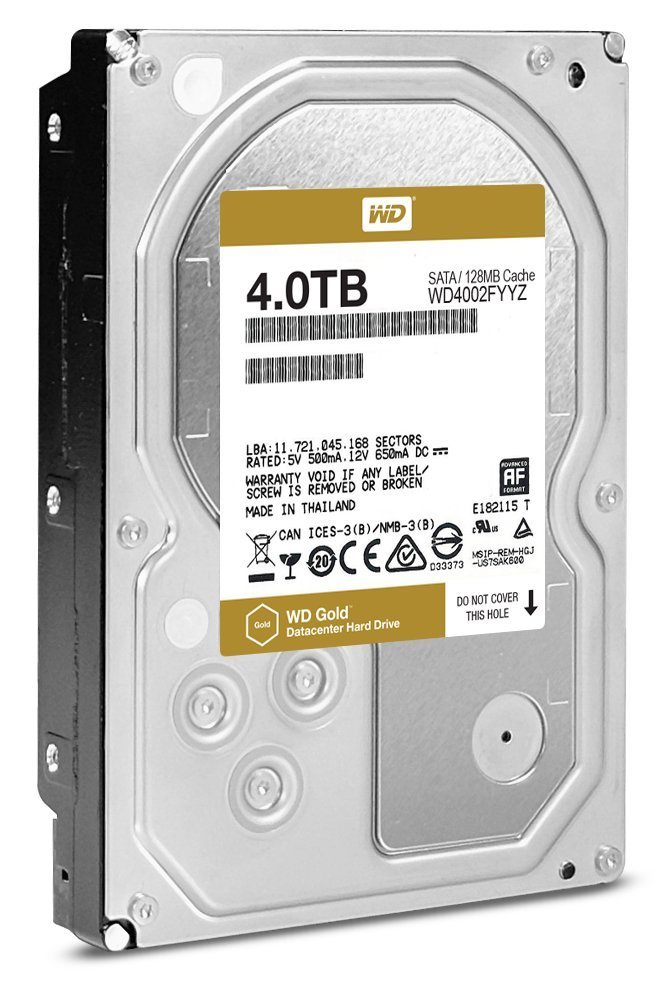
The Gold is the most expensive drive from WD and perhaps the most expensive market-available HDD in the world right now, but also the fastest and one of the most reliable. Unlike the others, which were born as consumer-grade drives, the Gold is actually the new version of the WD REEEEEEEEEE drive, which was WD’s old flagship datacenter drive. Thus, it’s actually tested and meant for 24/7 heavy-duty use.
Like the Black, the Gold also rocks 5 years of warranty, and, as a datacenter drive, it incorporates all of the relevant technologies found in the Black AND the Red Pro, including TLER, Double Actuator and other things. As a datacenter drive, it’ll also work at better power efficiency (though, if you are planning to use it only as your desktop drive, then honestly it doesn’t mean much).
As for the drive’s speed, well, sadly enough there are not enough benchmarks for this drive on Userbenchmark for a quick comparison. That’s all fine and dandy, I’ll just use my own CrystalDiskMark results on my drive instead:
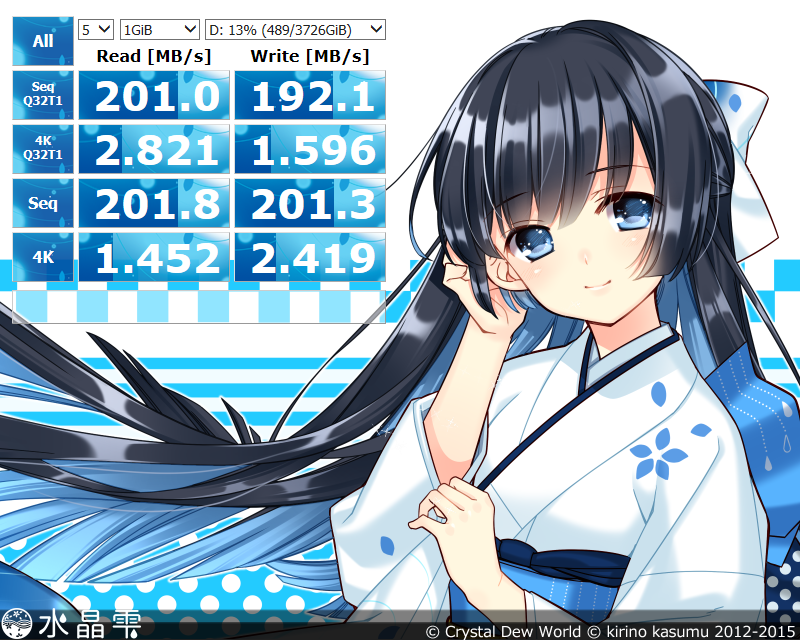
As you can see, in the HDD realm, this speed is fast! For a simple comparison, the average benchmark results of the latest 4 TB Black drive is 178 MB/s for read and 171 MB/s for write, according to Userbenchmark, so 200 MB/s for both read and write is nothing to sneeze at!
As for capacity, the Gold drive is available in different capacities from 1 TB all the way up to the top-end 10 TB! I’m using a 4 TB model, myself.
So, to recap, my opinions on the Gold, my new personal favorite, are:
Pros:
- Datacenter quality: better reliability and power efficiency.
- Fastest performance, perhaps among all pure HDDs on the market right now.
- Has a 5-year warranty.
- Currently cheaper than the latest Black and Red Pro on Amazon for some reasons (perhaps because of low demand?)
Cons:
- Nothing really, but if prices are where they are supposed to be, then you can expect the Gold to be a bit more expensive than the Black or Red Pro.
With the Gold, my overview has come to end. Thank you for reading and supporting me so far! Which of the color drives is your favorite? Can you enlighten me more on those drives, especially on the Purple, since I’m still just a newbie? ^^ Again, thank you very much.
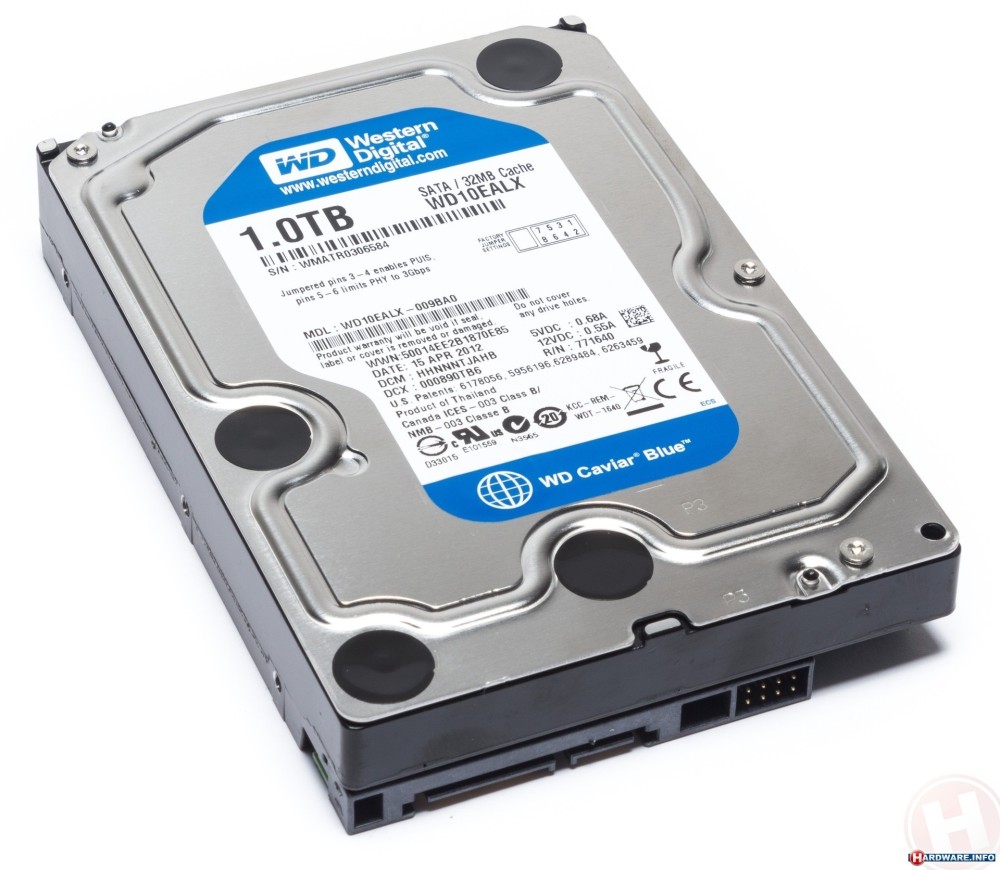
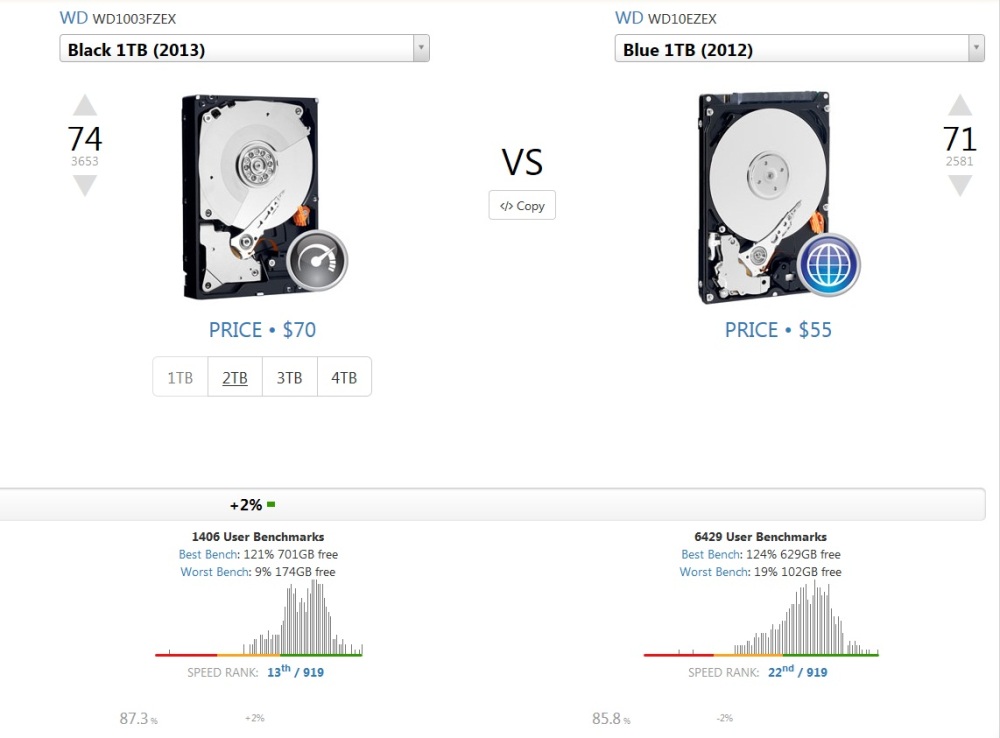
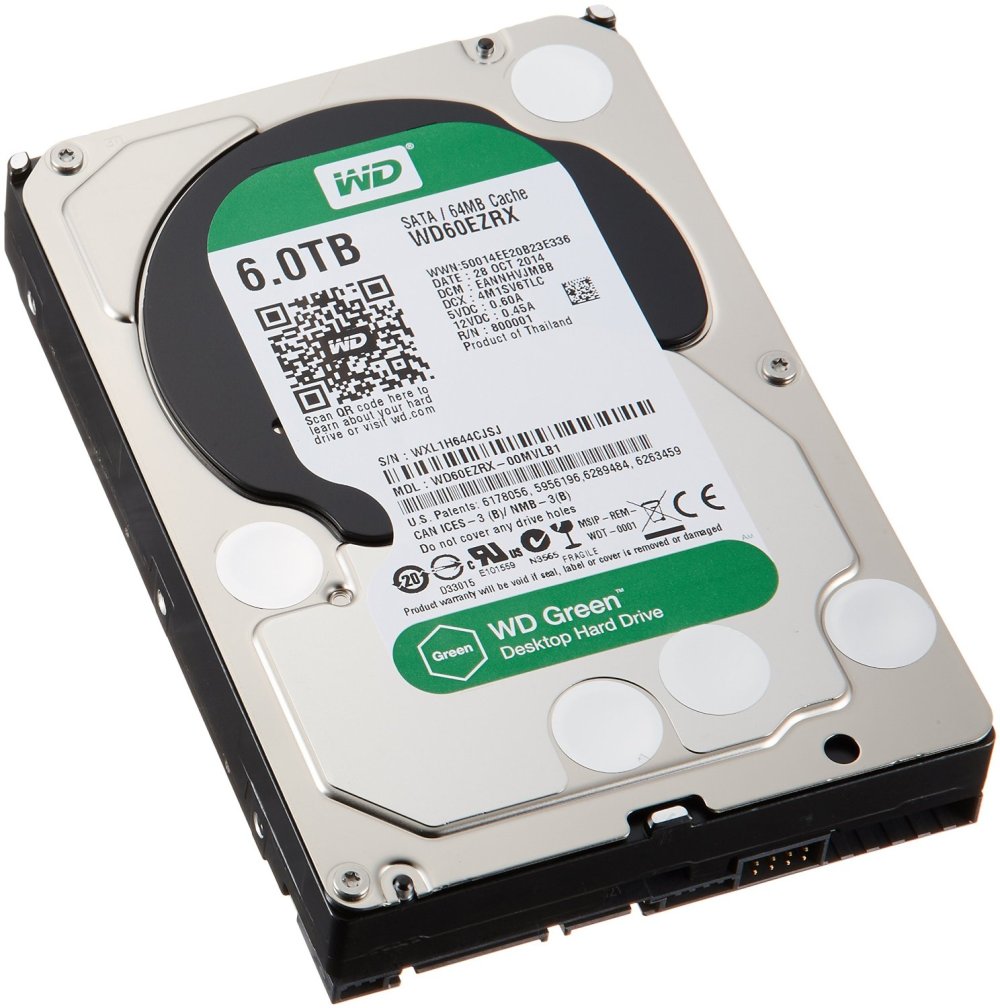
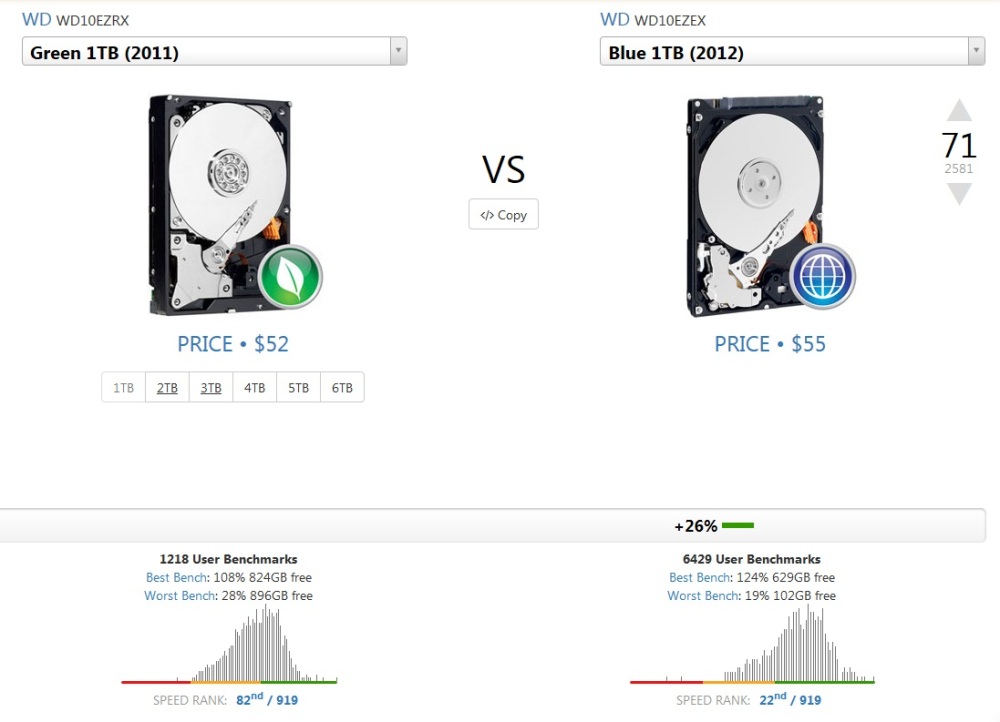
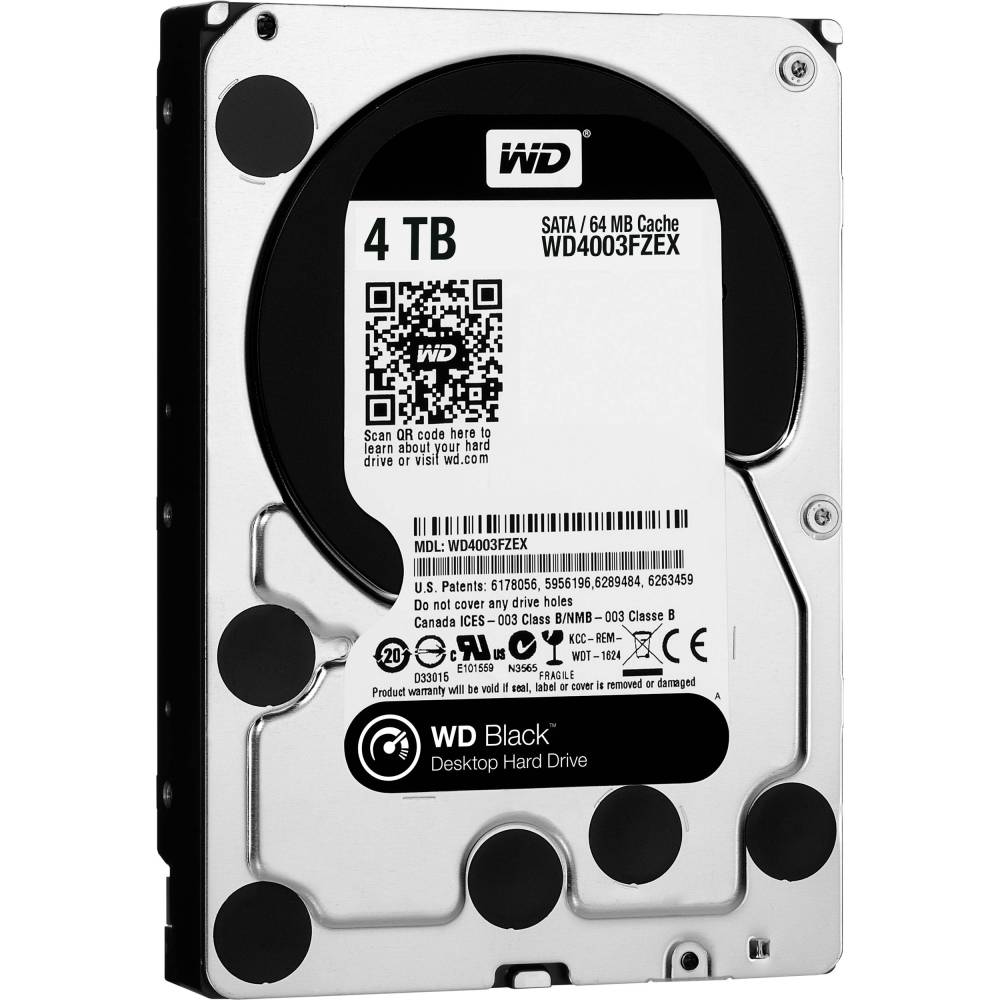
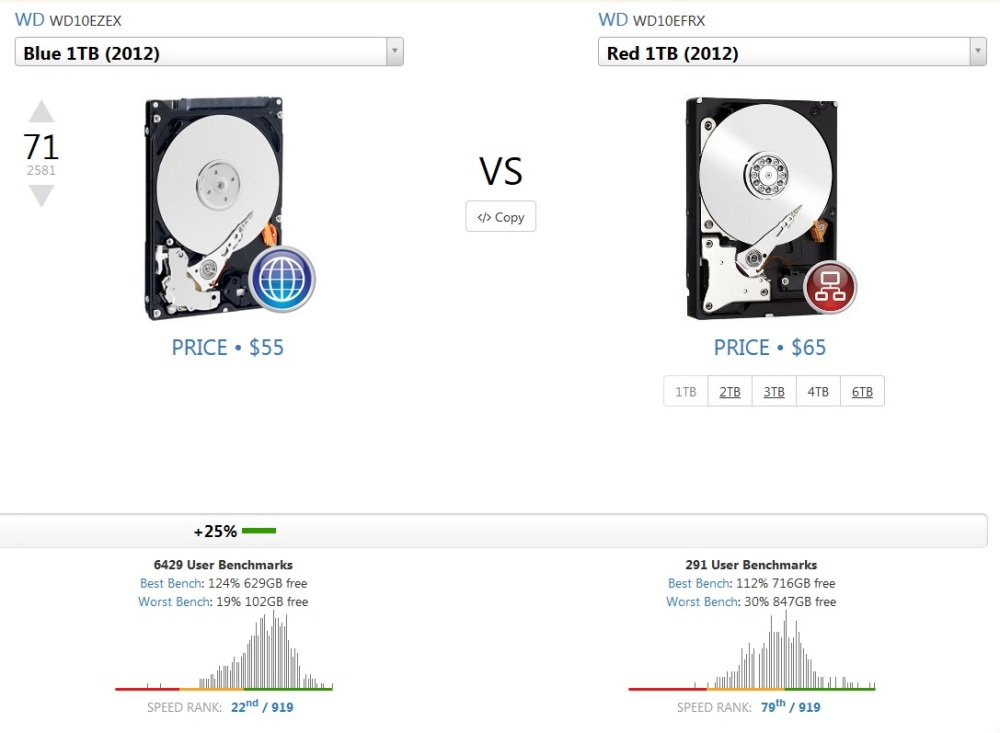
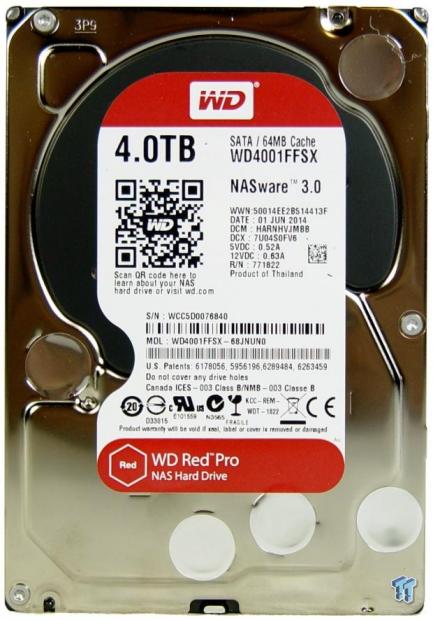
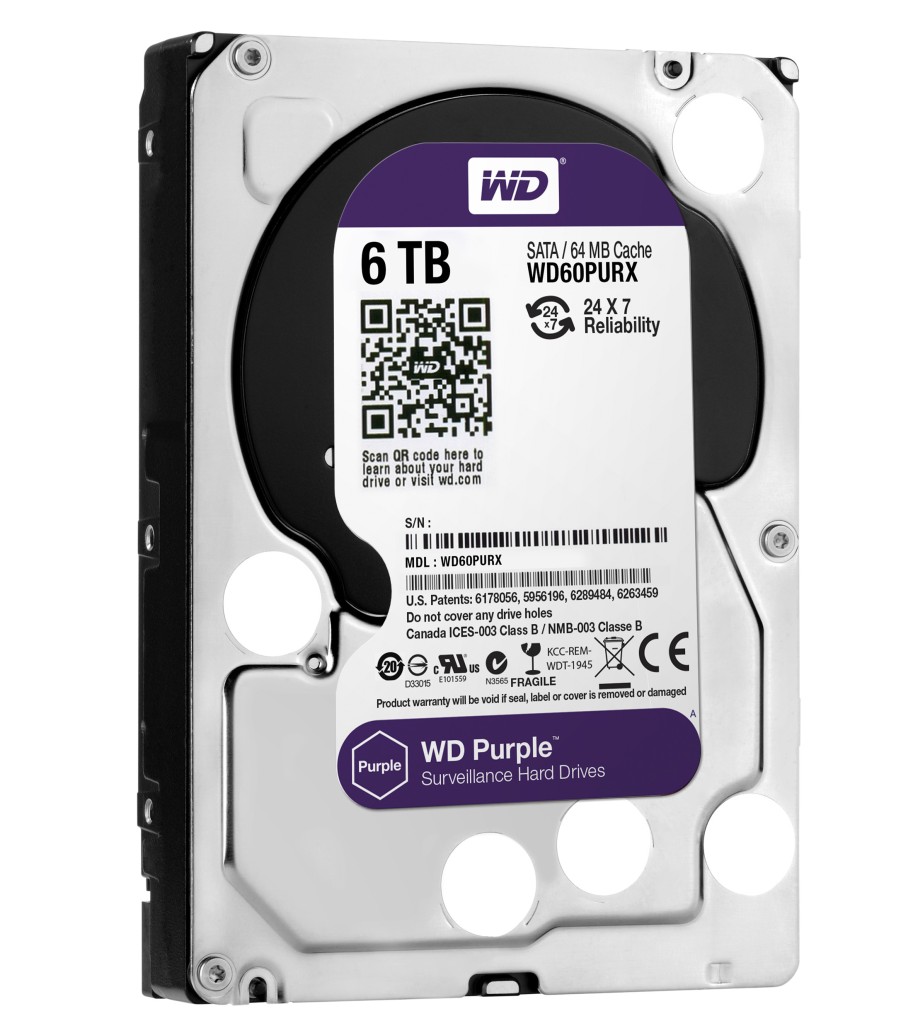
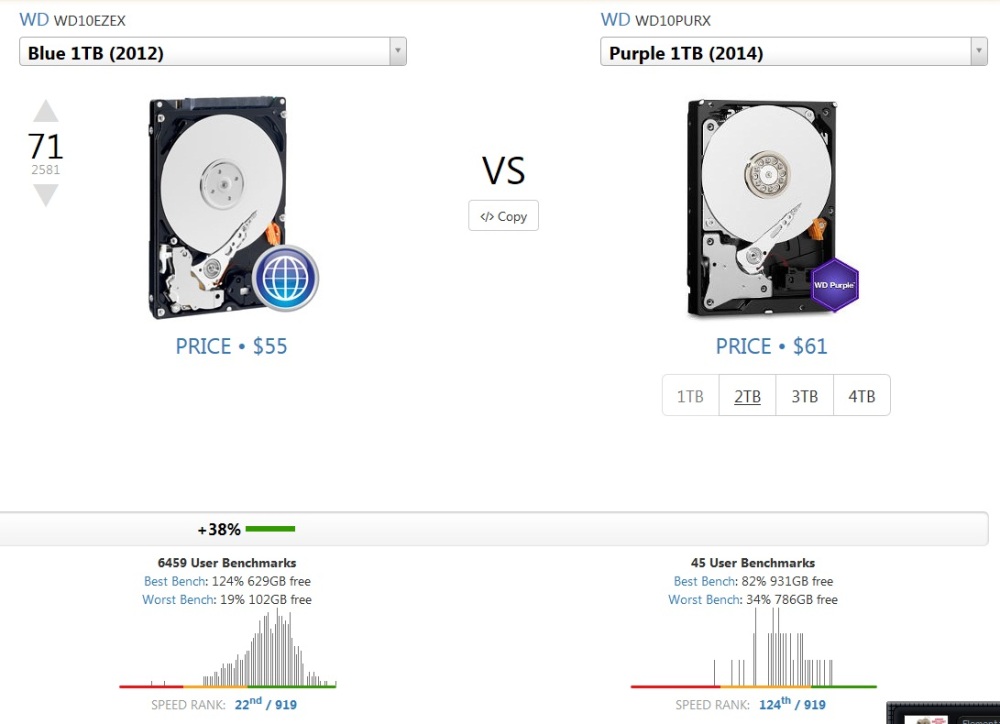
“you always stand at the risk of being kicked out of your work, or seeing your drive suddenly looking as dead as your face when you realize you don’t have a backup.” ROFL! btw, good one!
LikeLike
Thank you! 🙂 Also, I have some heads up… In this month I’ll have to study a lot to prepare for my tests (the ministry of education in my country screwed the schedule up again and now we have to complete the entirety of the first half of the second semester… in one single month. >.<) and, more importantly, my NTU (Nanyang Technological University, in Singapore) entrance exams.
Thus, it's very likely that I won't be able to post anything new this January, though I do have a few ideas (my PC's latest major update, CES 2016, and RGB), and I'll have the Lunar New Year vacation (my country, Vietnam, celebrates Lunar New Year instead of the regular New Year) right afterwards, so expect many posts in February! 🙂
LikeLike
Which is better for windows 10 performance?? Seagate or WD? Is wd black 1tb internal compatible with windows 10 x64 & x32? please leave a brief reply… thank you
LikeLike
WD Black, and yes.
LikeLike
lol linux is better for windows 10 performance, just go through ubuntu’s simple setup and u will have much better perfomance
LikeLike
Linux is a different OS family entirely, how does it affect “Windows 10 Performance”?!!! No one is comparing OSes here.
LikeLiked by 1 person
This is what one site says about the Purple drives: “Tuned for write-intensive, low bit-rate, high stream-count applications typical to most surveillance applications.
Prioritized write-operations for maximized surveillance performance”.
This makes sense, when you think about it: Surveillance drives probably spend 99+% of their lives writing. In our office, the only times they read data is when someone needs to look at what was recorded at a particular date and time (less than once a month).
Data center (Red) drives also probably spend more time reading data than writing data.
Black/drives are closer to 50:50 in all likely hood.
LikeLiked by 1 person
I’m currently using Seagate Barracuda for 5 years with extreme PC usage (I just turn off my PC on weekend), it’s still working flawlessly. I’m always using Seagate product for 15 years, never got a problem.
Then A week ago I need to build a new PC, so I purchased WD caviar black because lot of great review. I got bad product, DOA, the harddrive clicking, can’t write anything, when I checked with HDtune, half bad sector. RMA and I got a new one, HDtune is great (all green).
The problem is, this harddrive is very slow compare to seagate barracuda, and then I checked it with same PC, and yes it’s slow compare to the seagate. Simple case, when I open same windows folder that has dozens of images, on seagate the thumbnails opened instantly, on caviar black there’s a delay, the thumbnails show up one by one.
Unfortunately my friend just tell me that his harddrive (Western digital) was broken in 2 year.
For me, no more western digital products!
LikeLike
(Late reply, but I’ve been really busy lately, sorry. >.<)
Well, I'm just writing this blog post based on general information and the little experience I have. Of course, every person has his/her own circumstances, and every company has a good and bad batch.
If you have had a good Seagate experience, then that's great! Because Seagate drives are normally so fast and cheap, if they are also durable to you, then that's a really sweet deal! I just PERSONALLY like WD more because I've repaired/upgraded some of my friends' PCs and some of them have problems with Seagate, plus the online consensus on them is not that great, while WD hasn't failed me and, to me, looks a bit more professional. ^^
Also, where did you buy/RMA the WD drive from? Because if the drive came with half bad sectors and not clicking, then that means the drive not only had a technical problem, but was severely, PHYSICALLY damaged. Plus, when you RMA these products, sometimes they'll give you a refurbished drive. Durability and condition-on-arrival may vary, but a good WD Black shouldn't be slower than a Seagate, at all.
Still, in any case, thanks for your comment and good luck with your Seagate! It's fast, cheap, and durable. Cherish it! ^^
LikeLike
The best drive I ever bought was an Excelstor drive (unfortunately Excelstor don’t make drives any more!). I bought it many years ago (possibly 2000-2001 at Bowlers Computer Fair in Manchester, and amazingly I’m still using it today as my primary boot drive for Windows and it works fine. I also have a WD 1Tb drive in there as extra storage – that replaced a 1Tb Toshiba drive which despite Toshiba being a decent Japanese brand I was surprised that the Toshiba drive only lasted just over a year and was out of warranty when it failed.
I’ve also got a small portable Samsung 2.5″ external drive which has been amazing – it was one of the early Samsung drives before Seagate got involved – I don’t know what Seagate’s version of Samsung drives are like though. The Samsung drive though has been great as I’ve dropped it so many times onto hard floors, thinking the drive would be toast, but it’s still absolutely fine!
I used to use Seagate a lot many years ago – primarily the Barracuda versions, but then they changed their drives I started to come across so many that would fail regularly, it seemed to be once the drives got to about 1Tb size that’s when the Seagate ones seemed to be prone to failing. I don’t know whether the technology they were using just wasn’t good enough at the 1Tb level or something.
Possibly the worst experience I’ve ever had with WD though has to be with the MyCloud. One of my friends bought a WD MyCloud and the amount of times I had to go back and try and fix multiple problems with the drive. The drive would constantly lose folders. One minute there would be a folder there and then suddenly it would say the folder has disappeared, and also the drive kept disappearing off the network altogether. I thought it was a dodgy ethernet cable or something or connection somewhere so we tried changing that, even tried putting it onto a router on it’s own with only one other computer accessing it and no internet access and even then it suffered so many problems and we even reset the drive back to factory settings in case something had gone wrong in the settings – it worked then for about a day or two before going back to it’s old tricks. In the end we got WD involved and they offered to change the MyCloud drive for a new one. The new one seemed to have new software in it and has now been working perfectly for over a year.
LikeLike
Well, my personal favorite is actually HGST, but it can be hard to come across one of their solutions for a consumer-class machine, so WD is usually a solid choice.
As for Toshiba, I think they are normally durable, or at least used to be (they don’t really make many drives anymore. They are still in the business, but mostly trying to keep up with SSDs now), but every brand has a bad batch.
Samsung has always been and still is a solid choice.
LikeLike
Any word on where the WD Gold series fits in?
LikeLike
Sorry for really really late reply, but the Gold would be the best series thus far. It’s faster AND (should be) more reliable than a Black, while also being more expensive. It’s pretty much an upgraded RE given a color code.
I’ve been abandoning this blog in favor of college work, improving my writing skills, and further research (well… 5% of all of the above, 95% generally slacking off… orz), sorry all.
LikeLike
Our company used WD Purple in a client’s DVR system. At least 1 HDD failed every month and where the HDDs were used in the RAID system, the 2nd drive would fail less that 8 hours into a RAID rebuild leading to complete data loss.
When we finally asked the DVR manufacturer to advise if it’s possible there was a bug, it turned out that the problem was the HDDs. They recommended enterprise HDD instead of Surveillance-rated. 8 months down the line, that client has not faced any single issue with their Hard drives.
LikeLike
To be honest, I could never understand the point behind surveillance HDDs, but oh well, what do I know…
LikeLike
You’re off the mark on your benchmark for the Purple. Those drives are optimized for writes (recording security camera footage) not reads (the rare time you need to review the footage), and your benchmarking software is probably preferring read operations, since that’s what normal PC use requires most.
LikeLike
While what you said is true, the Purple is optimized for write speeds, its write speed still wouldn’t beat the Blue’s or Black’s performance-wise. To give you a VERY quick glance (once again, Userbenchmark should NOT be used as an official benchmark source):
Left: WD Purple 2TB, 2014 version
Right: WD Blue 1TB, 2012 version (the version relevant to the article. Strangely enough, the 2015 version is actually slower than the 2012 one. Guess they made it more budget.)
LikeLike
M3TA7: You Rock!
how do you manage to answer my question so exhaustively,
yet manage the time for a student crush schedule?
NUMBER82
LikeLike
Thank you, though to be honest I just spend most of my time living college life… I can only write like one article here every semester… ^^”
LikeLike
Excellent review! I search intel about server’ HDD and your post gave me a good insight of the “WD Rainbow” indeed. I knew already Seagate HDD were less reliable (like the 3TB ST3000vn000 series), fortunately some guys run well with the brand anyway, like Darren Foster here.
I’d like to read more comments and comparison about Toshiba and HGST disks too. Does anyone have some experience with them?
LikeLike
HGST disks are generally the best choice for a HDD brand, especially for server-workstation purposes. However, they can be harder to find.
I would recommend something like an Ultrastar He6/8/10 if you can find a reasonable price and are serious about this stuff. Otherwise, WD Black and Gold are good enough.
…Speaking of Gold, I really need to update this article with Gold drives once I have the time. :v I bought one myself.
LikeLike
where is gold
LikeLike
Updated. Sorry for abandoning the blog in favor of schoolwork… OTZ
LikeLike
but the benchmarks in the article are not measuring the actual speed of the drives, they are comparing how much information the ‘x’ drive user has put on it.
LikeLike
Uhm… no?
LikeLike
2 years later and it has helped a guy who has worked with PCs for 25 years so far. Well, sir, I must say this has enlighted me a lot!
I’ve been searching around my local market to see what HDD get, then I stumbled upon so different WD colors and… yeah, you can see why I got here. Now everything makes more sense and I know what NOT to get from them… although I wish I could enlight you with the purple drives as well, but my guesses are as good as yours. What I haven’t seen before are Hitachi drives before (I just knew about it thanks to the graphic of the Seagate and WD annual failure rate), ever tried one? I’d like to know your results if you have so.
Once again, delightful review you have brought to us, sir! I take my hat off to you!
LikeLike
Hitachi is pretty much the most reliable stuff you can go for nowadays and I have no problems recommending them. They won’t be the fastest or fanciest stuff you can find, and they are quite old (the ones with the “Hitachi” brand, at least), but if you just want storage space, they are a perfect choice. You can get them refurbished or used for extremely cheap too.
Hitachi’s hard drive department’s new name is HGST (Hitachi Global Storage Technologies) by the way, which is now a subset of WD. HGST is generally fast AND reliable and is well-liked among server builders, but since most of them use the SAS connection instead of the more popular SATA, they may not be compatible with every motherboard out there. (They are generally meant for workstation chipsets, Xeons and the like.)
P.S. It’s madame… ^^”
LikeLike
Oops, my apologies for the mistake, ma’am, I… heh, I didn’t know.
Anyways! Hmm… now that you mention it, it is very hard for me to find Hitachi and HGST drives, not even used, they may not be that popular down here (I’m from South-America). Guess I gotta rely on WD for now (not that it’s bad, oh no, I always like to try alternatives)..
Again, thank you very much for your time, madame! It’s been a pleasure!
LikeLike
You might like to cast a glance at the blog from the folks at Backblaze, a cloud backup/storage player. They have lots of drives and have for some time been doing regular updates on their experiences with reliability of various models and manufacturers in their blog. (e.g. https://www.backblaze.com/blog/hard-drive-failure-rates-q3-2016/) Less hype than some. More observed fact. And some good analysis.
For extra style points they also called out their own mis-steps in their early days when they hadn’t mechanically isolated their drives sufficiently and vibrations of the, then, 44 other drives in the enclosure would increase the mortality rates of those drives neighbours. This is where you get to rethink the accurate tracking and vibration resistance WD talks about. 🙂
LikeLike
Thank you for the share! Well, I’ve always known to take marketing gizmo with a grain of salt, but in a casual, beginner-friendly article, I just thought it’d still be better to list all those buzzwords so the readers at least know what WD is trying to talk about…
(That, and the embarrassing truth that for the most part, I never know what I am talking about. :v)
LikeLike
Question:
How will the TLER effect data corruption and recovery? It would seem to me that having it quit trying to recover data to quickly in a non-raid environment would be not desirable. I am trying to determine which to buy for a desktop and don’t want to make a bad decision that will cost me data.
LikeLike
Ummm…. That’s why those drives are for NAS/Servers and NOT Desktop applications. Go with another drive.
LikeLike
Regarding the HGST drives. I just looked and saw them all over Amazon with SATA connectors. They only seem to have 7200 RPM drives in 1, 2, or 3 TB (or at least that seems to be all Amazon has) so if you want something larger you might be out of luck. And they are CHEAP < 100USD.
LikeLike